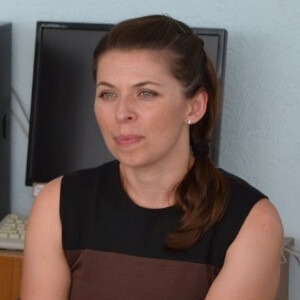Richard Dick, Ohio State University, United States
Recurring in-season drought, exacerbated by climate change, threatens food security for the majority rural small farm holder households of the Sahel, West Africa. Furthermore, the region is plagued with degraded soils due to population growth and concurrent intensification of cro [....] » Read More






























Title : Deciphering the mechanism of action of complex agricultural inputs for the future of a nutritious and globally sustainable food system
Rajnish Khanna, Carnegie Science at Stanford University, and i-Cultiver, Inc., United States
There are many products in the market, and each product claims to be superior to all the other products in performance – but how do we know that is true? The agricultural marketplace is driven through marketing capabilities rather than actual product efficacy or sustainabil [....] » Read More
Title : Rhomboid-mediated cleavage of the immune receptor xa21 protects grain set and male fertility in rice
Wen Yuan Song, University of Florida, United States
To maintain growth and to successfully reproduce, organisms must protect key functions in specific tissues, particularly when countering pathogen invasion using internal defensive proteins that may disrupt their own developmental processes. The rice immune receptor XA21 confers r [....] » Read More
Title : Microelement profile of soybean forage managed by intercropping and bio-fertilizer use
Milena Senk, Maize Research Institute Zemun Polje, Serbia
One of the foremost advantages of soybean forage production is flexibility of harvest date due to retention of high nutritional quality of plant over longer period. This characteristic is particularly desirable in intercropping systems, where harvesting time must take in account [....] » Read More
Title : Structure function and regulation of the plasma membrane NaH antiporter Salt Overly Sensitive 1 SOS1 in plants
Xingyu Jiang, Guangdong Ocean University, China
Short Description of what will be discussed during the presentation (about 250 - 500 words) Physiological studies have confirmed that export of Na+ to improve salt tolerance in plants is regulated by the combined activities of a complex transport system. In the Na+ transport sys [....] » Read More
Title : Species proportion modulates biomass allocation, nitrogen dynamics and soil biogeochemistry in rye–vetch intercropping systems
Paola Ganugi, University of Turin, Italy
Intercropping cereal–legume species is a well-established strategy to enhance agroecosystem sustainability, yet the influence of species proportion on plant performance and below-ground processes remains incompletely understood. In this study, we investigated how varying th [....] » Read More
Title : A step forwards in making Italian biodiversity globally accessible: The NBFC molecular biodiversity platform
Jessica Frigerio, University of Milano, Italy
Italian biodiversity is remarkably rich and varied due to the geographical and eco-climatic peculiarities of the country. Protecting, conserving, and enhancing this wealth must be a priority, starting with the morphological and molecular categorization of species. Genetic analysi [....] » Read More
Title : Application of bioengineering in construction
Sassan Mohasseb, Smteam GmbH, Switzerland
Bio-cement and bio-concrete are innovative solutions for sustainable construction, aiming to reduce environmental impact while maintaining the durability and versatility of building materials. Bio-cement is an eco-friendly alternative to traditional cement, produced through Micro [....] » Read More
Title : From lab to field: Bioethical dimensions of plant genomics and biotechnology
Ioannis Ladas, Antiochian House of Studies, United States
The rapidly advancing field of plant genomics and biotechnology holds the promise of revolutionizing agriculture by offering solutions to food insecurity, enhancing crop resilience, and increasing yield. However, the transition of these technologies from lab to field introduces c [....] » Read More
Title : The use of biofungicides as an environmentally friendly strategy for disease management
Jonathan Smet, Eleni Sioziou Aphea Bio, Belgium
Reflected in its mission ‘Applied Nature for a Better Agriculture’, Aphea.Bio develops sustainable agricultural products based on natural microorganisms to increase crop yields and to protect them against specific diseases. Aphea.Bio distinguishes itself through its u [....] » Read More